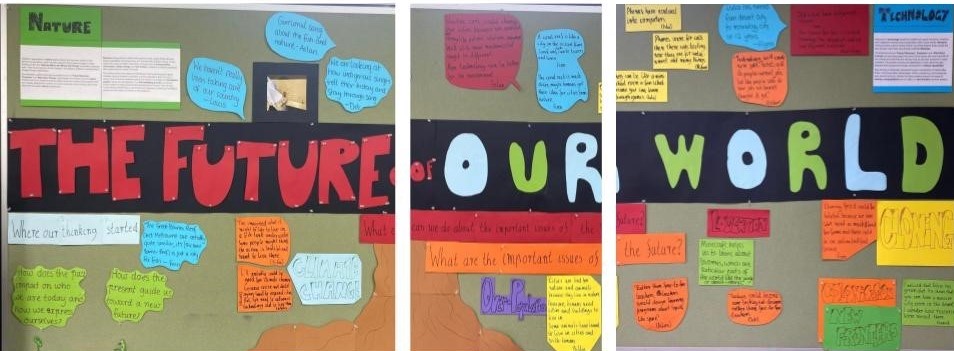This week the school community celebrated Harmony Week and its message ‘Everyone Belongs’. In Year 2, throughout the day, children engaged in experiences that provoked them to explore the question, ‘How do we express inclusion, belonging and diversity?’
Children made connections to the values of inclusion, belonging and diversity. They were quick to identify that their prevalence would be nurtured through relationships between people and grounded in everyone experiencing a welcoming feeling.
“Peace to everyone, people at school, people at home”. (Esther)
“Belonging in Australia because we are Australian and love being here”. (Finn)
“Peace and harmony mean respect and kindness”. (Elspeth)
“Respect to different cultures and religions… and foods’ (Noah)
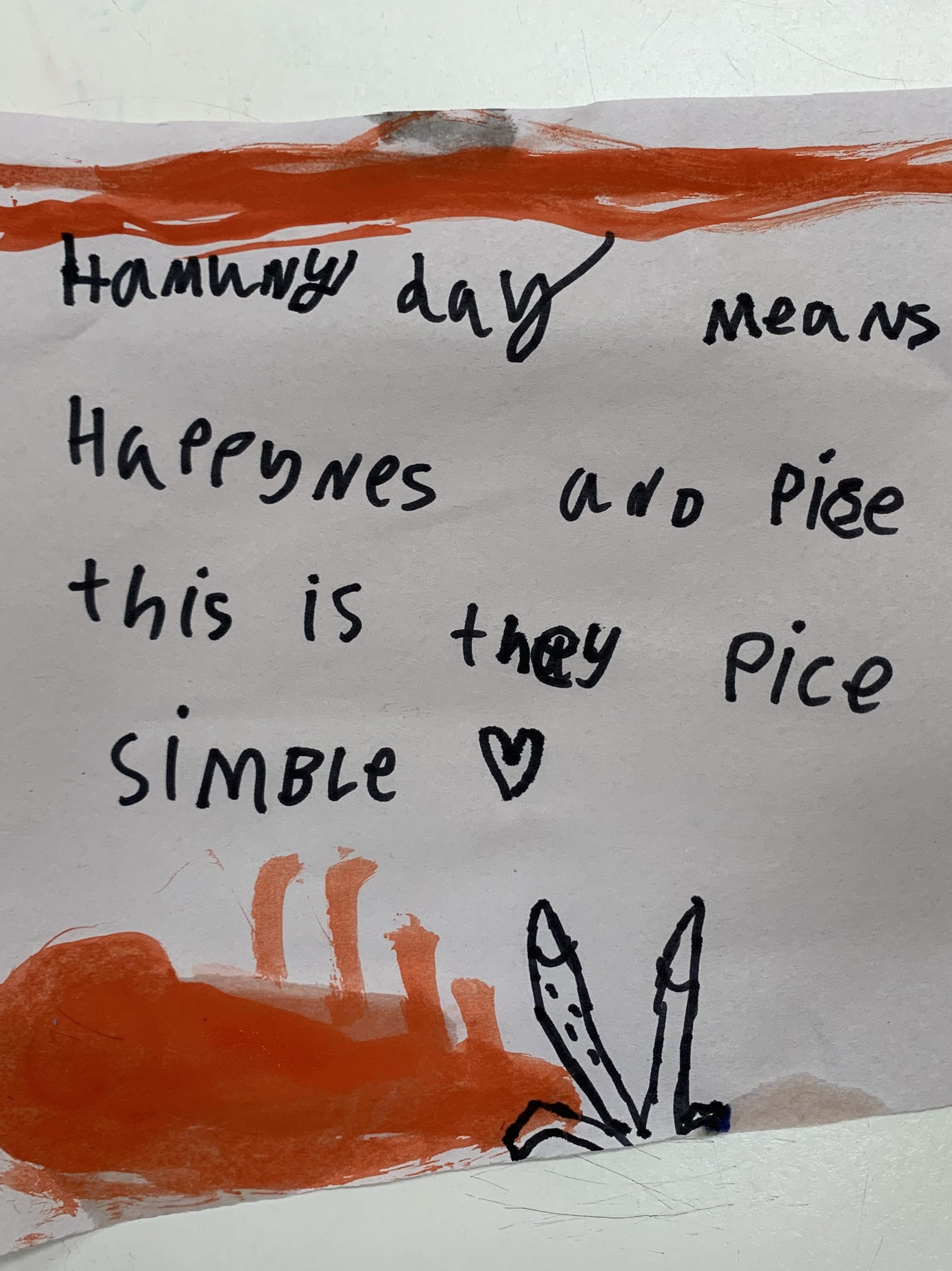
Vocabulary
Collectively, children built vocabulary related to Harmony Day. The collection of words continues to evidence that the children’s connections included people and culture.
| Accepting | Celebrate | Support |
| Community | Friendship | Helping |
| Respect | Family | Welcoming |
| Home | Kind | Difference |
| Safe | Truth | Collaboration |
| Food | Togetherness | Empathy |
| Fun | Nature | Rightful Place |
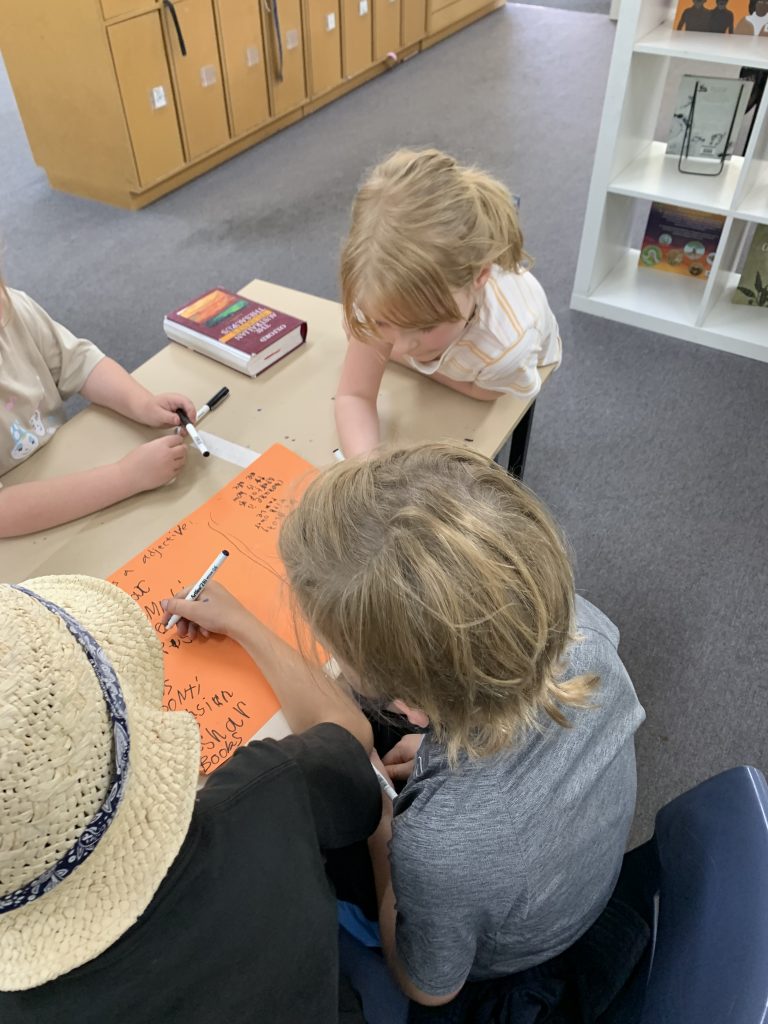

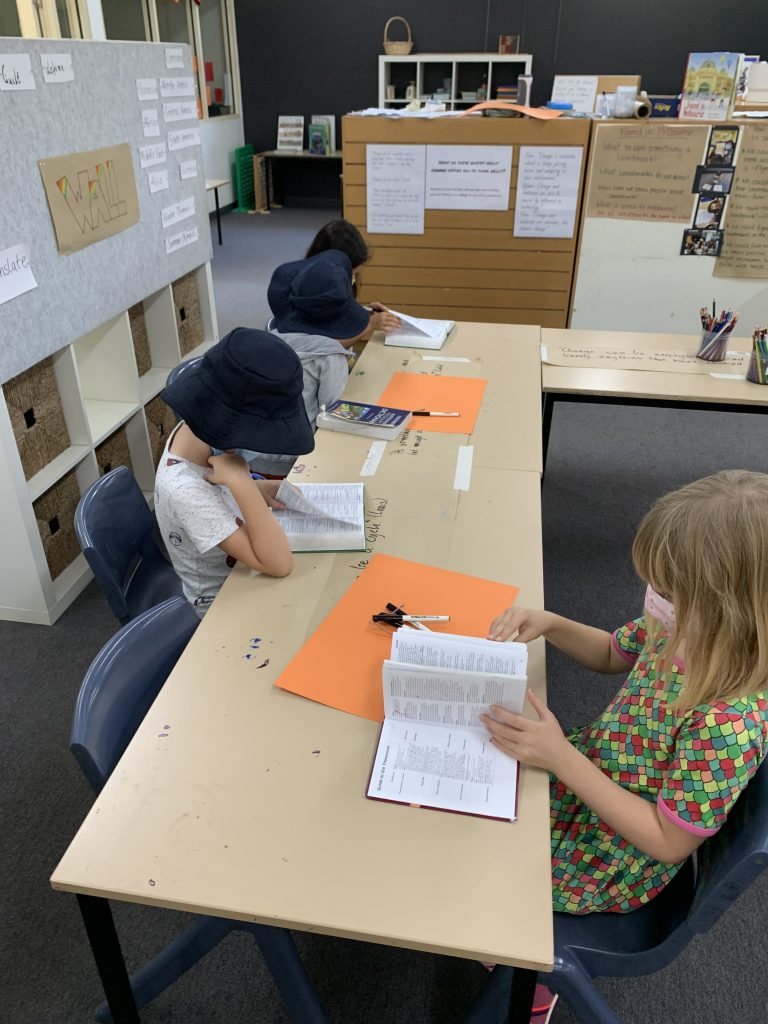
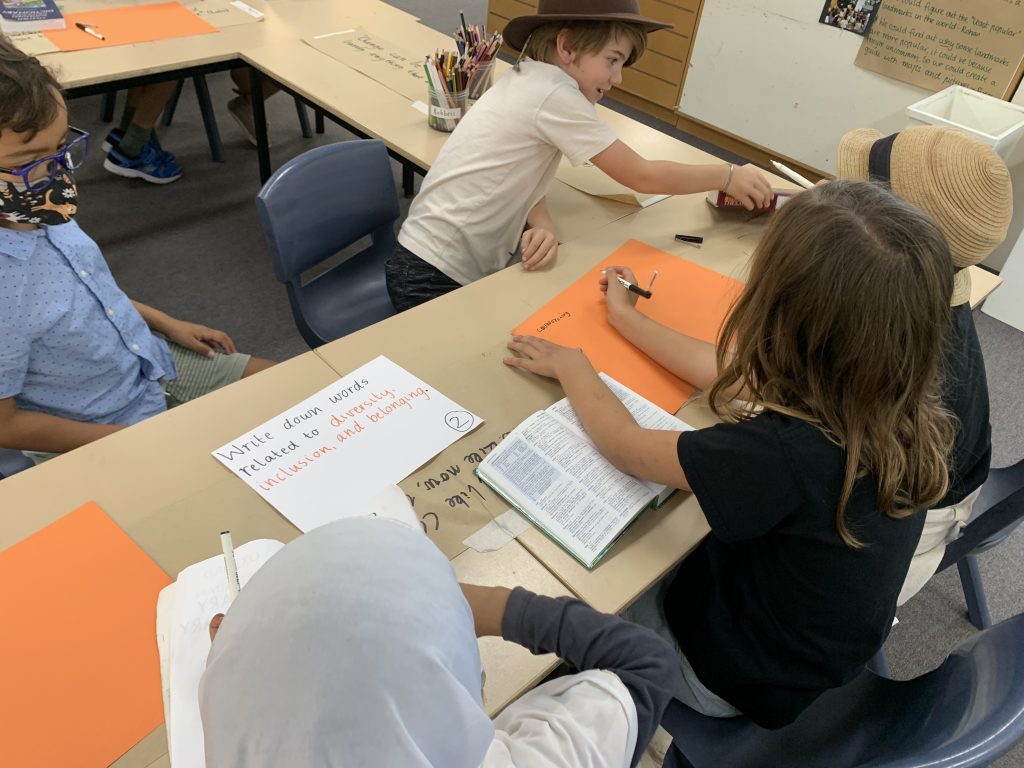
Interactions
Children were also provoked to consider how our interactions do or do not express the values of belonging, diversity and inclusion. Collectively, they were challenged to positively reframe comments and questions about differences. The documentation shows the unpacking of much of the collectively built vocabulary.
“I wonder what that is?”
“What is the name of what you are eating?”
“That looks interesting”
“That looks cool! Can I learn about your food?”
“Oh, I’ve never seen that food before. Can you tell me what you put in it?”
“Oh, I don’t know that language. Can you teach me?”
“What is the name of what you’re eating?”
“Come play with me.”
“I trust you. Let’s work together”.
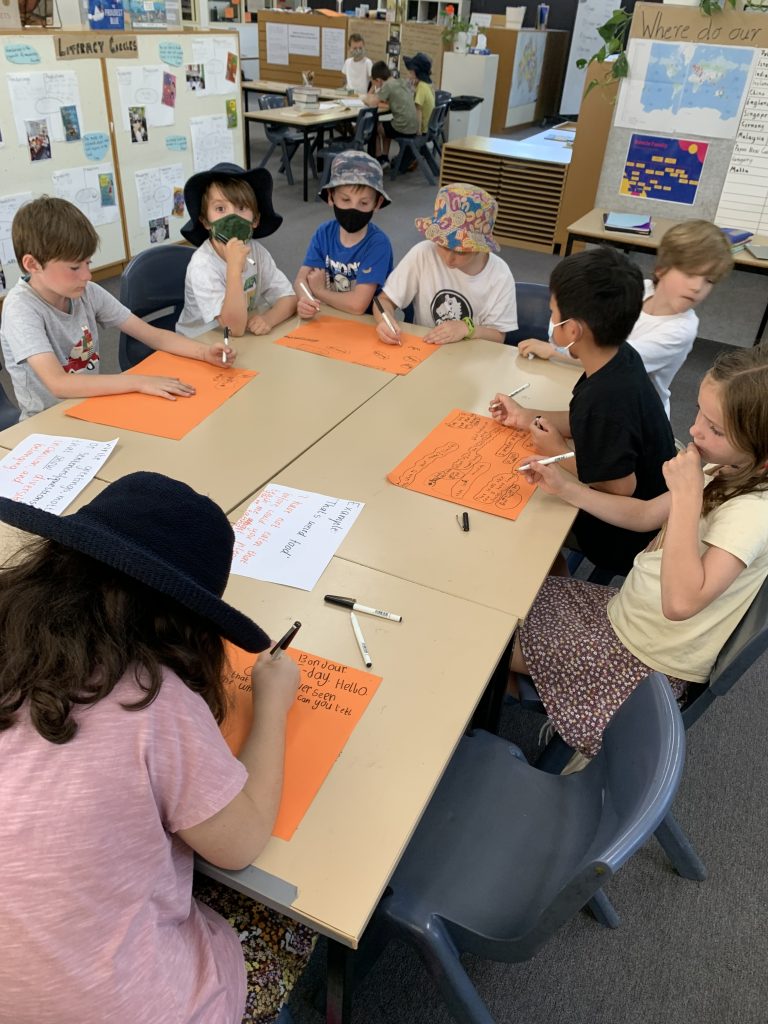
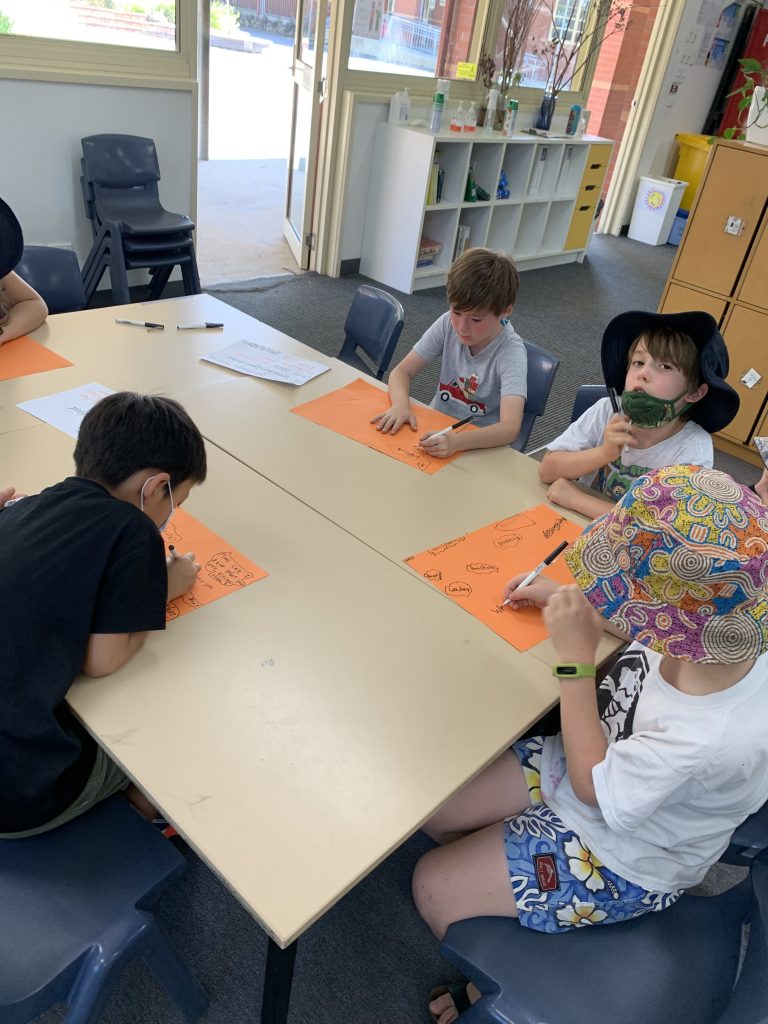
Ideas that sharing, collaborating, learning and teaching together can promote the values also emerge through the documentation.
“Showing people around, sharing things with them, and teaching each other things is a good way to show welcome”. (Leo O)
Finn- “Dancing has been around for billions of years. It’s a great way to show love and culture”.
Elspeth- “Teaching each other dances is welcoming because you have fun together”.
Lucie and Rhiannon- “It felt good to be silly”.


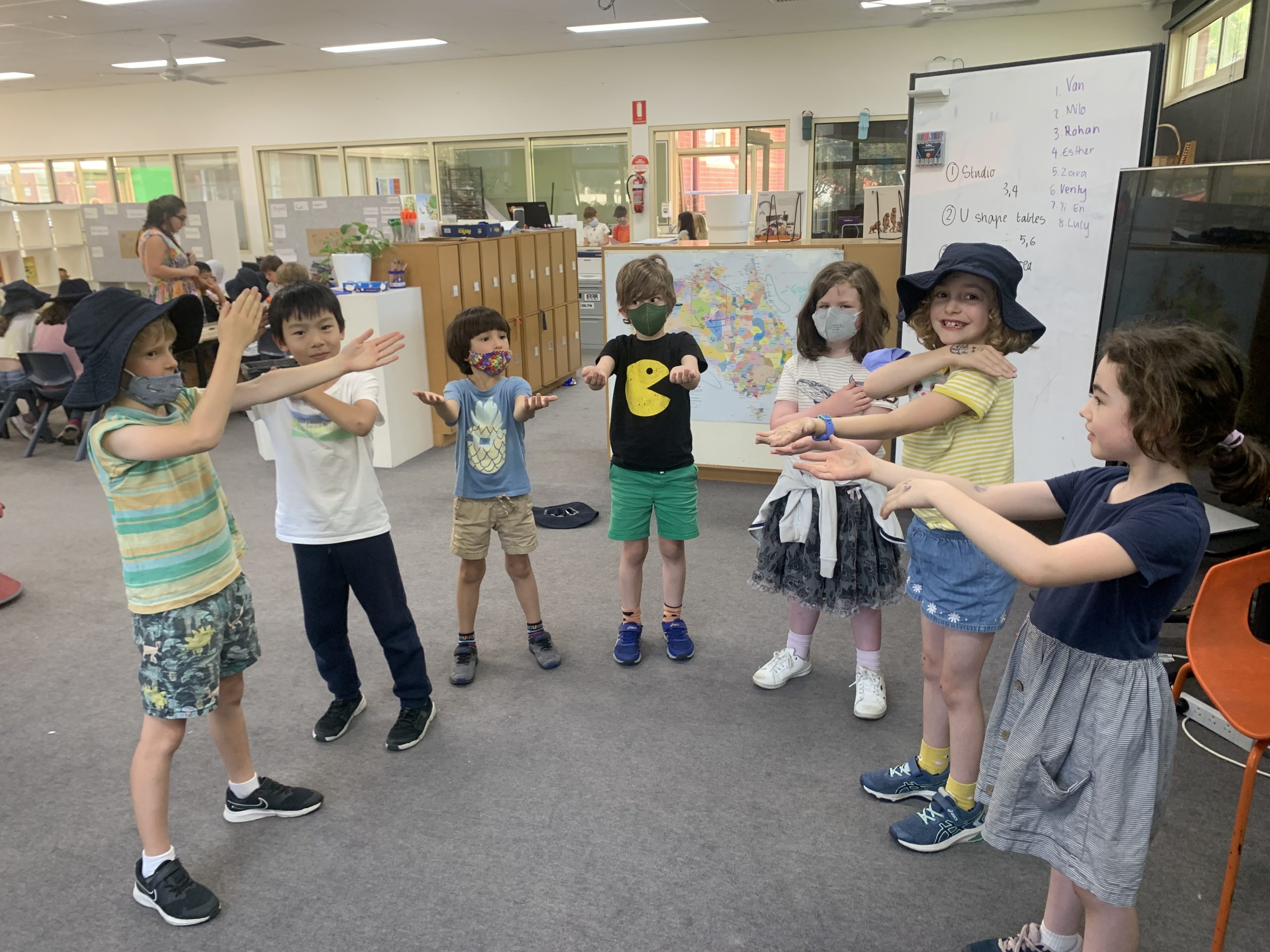
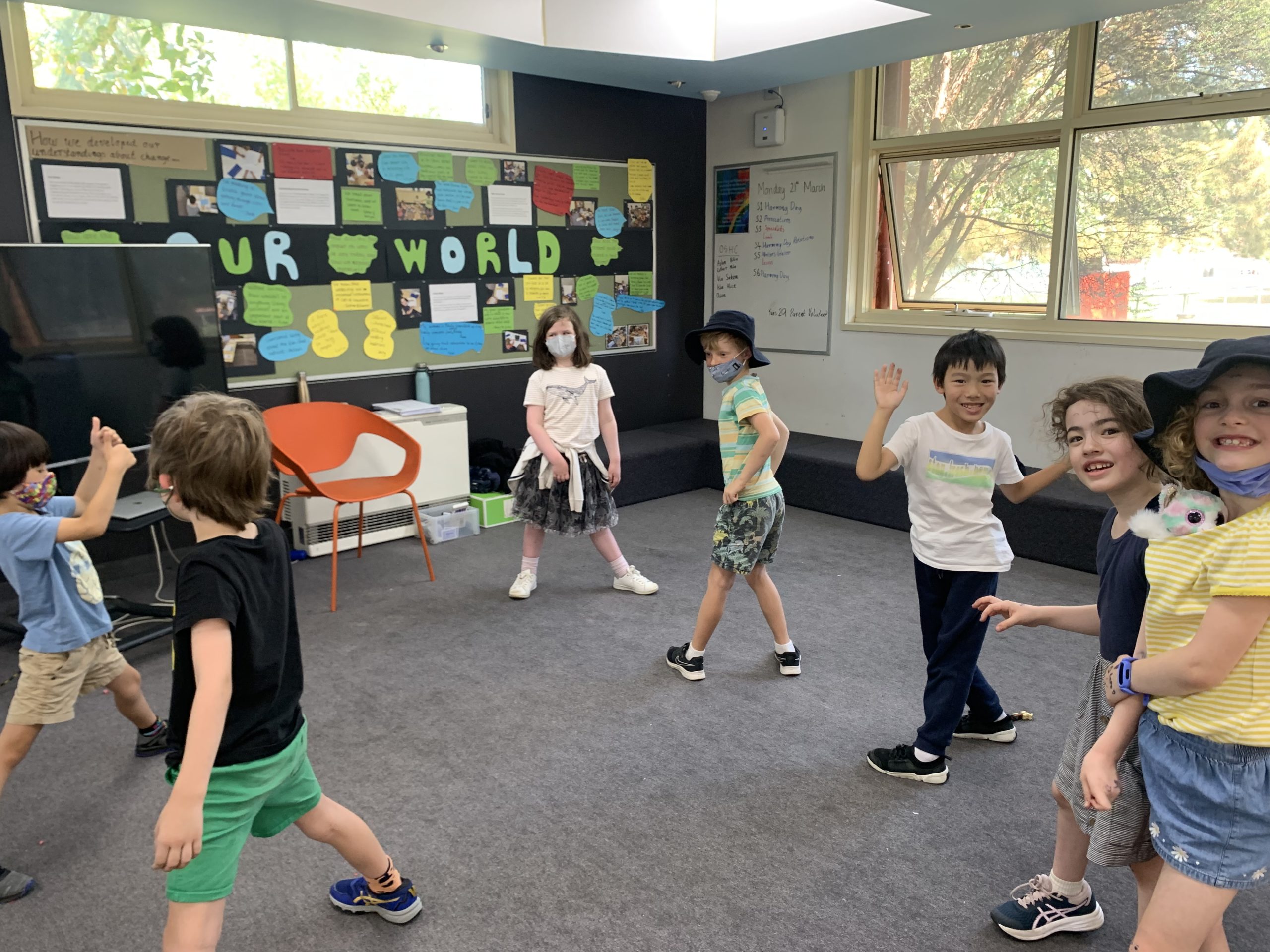

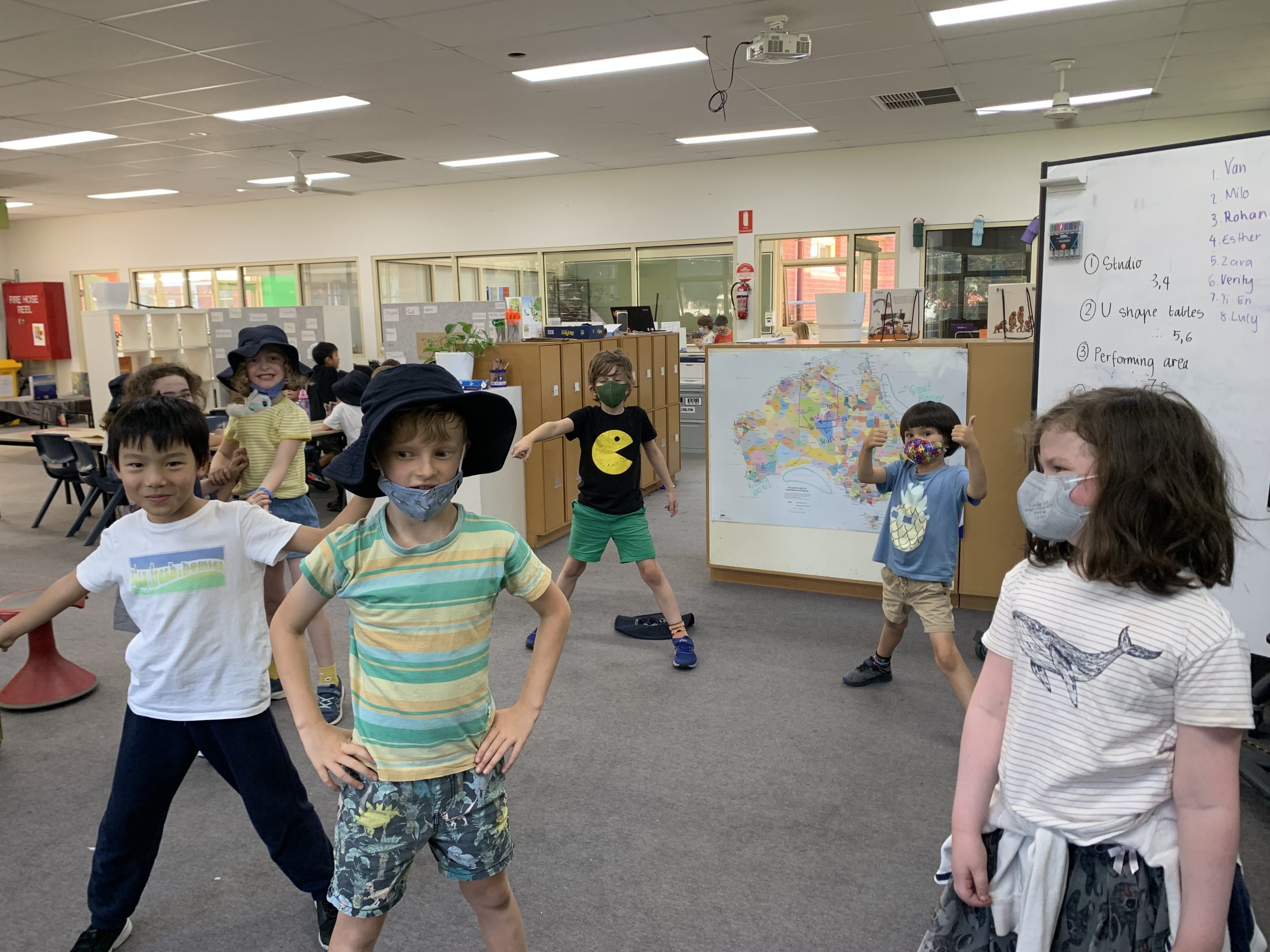
Symbolism
Children also engaged in artistic experiences where their ideas about how we express belonging, inclusion and diversity through colour and symbolism became prominent. Also evident in the documentation is the understanding that colour can evoke feelings.
Milo- “We did a circle because it makes an O for orange.”
Elliot- “It also makes the earth.”
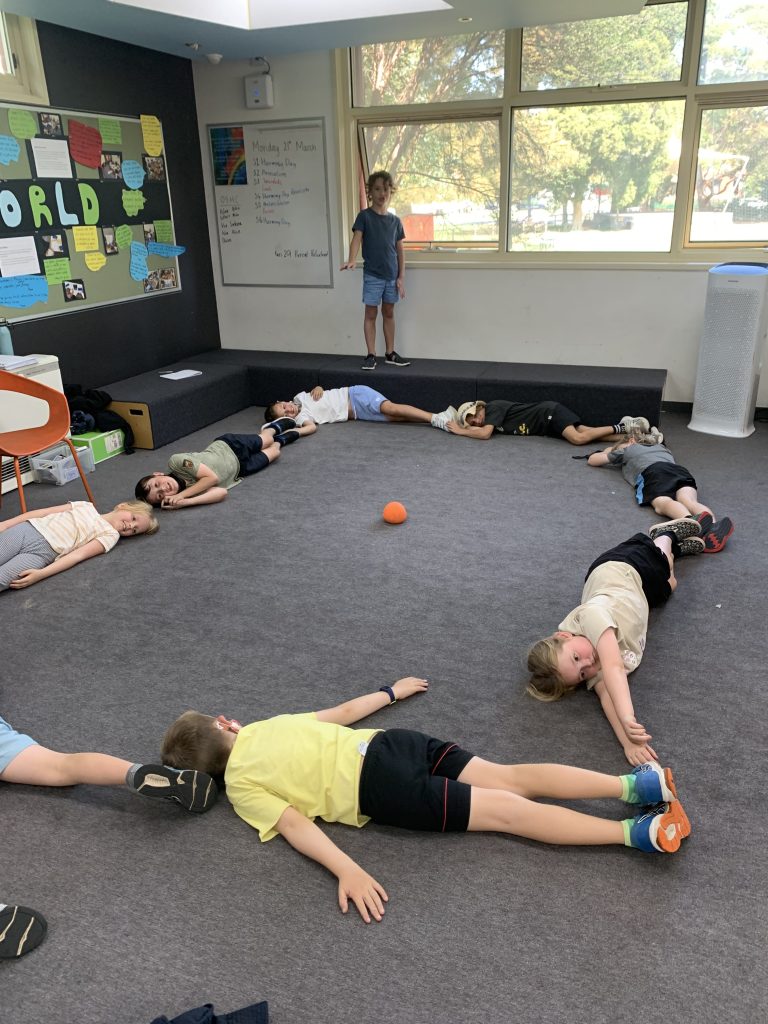
“We chose to make a love heart because it represents love and that’s what Harmony Day is all about.” (Flynn)
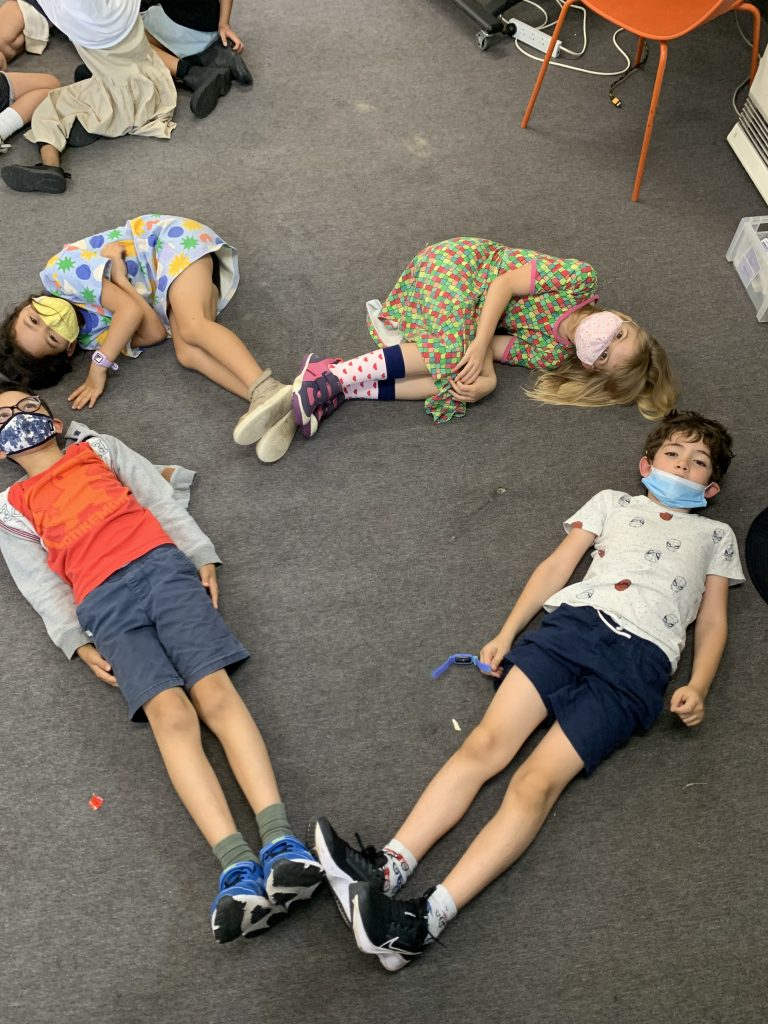
Flynn- “You could draw a dove to represent Harmony Day.”
Milo- “It could be an orange dove!”
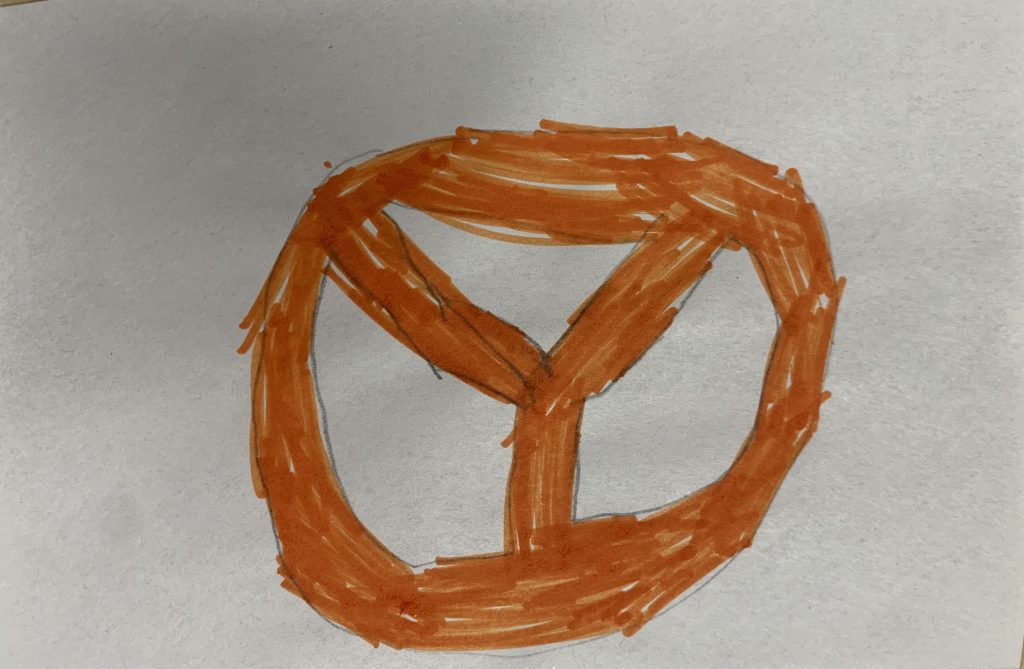
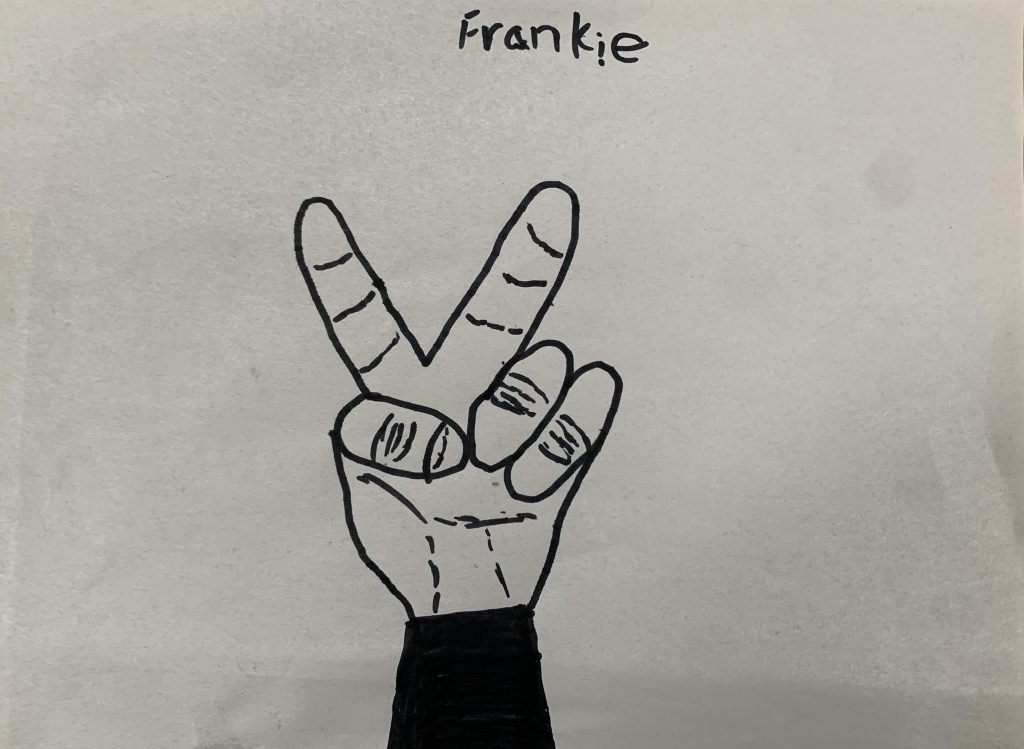
“I’ve chosen these colours, orange and yellow mixed together, because I think they represent cultures coming together and care. They create a happy mood. (Alice)
“Orange is for Harmony Day because it can be dark and light. It is also very calming.” (Elspeth)

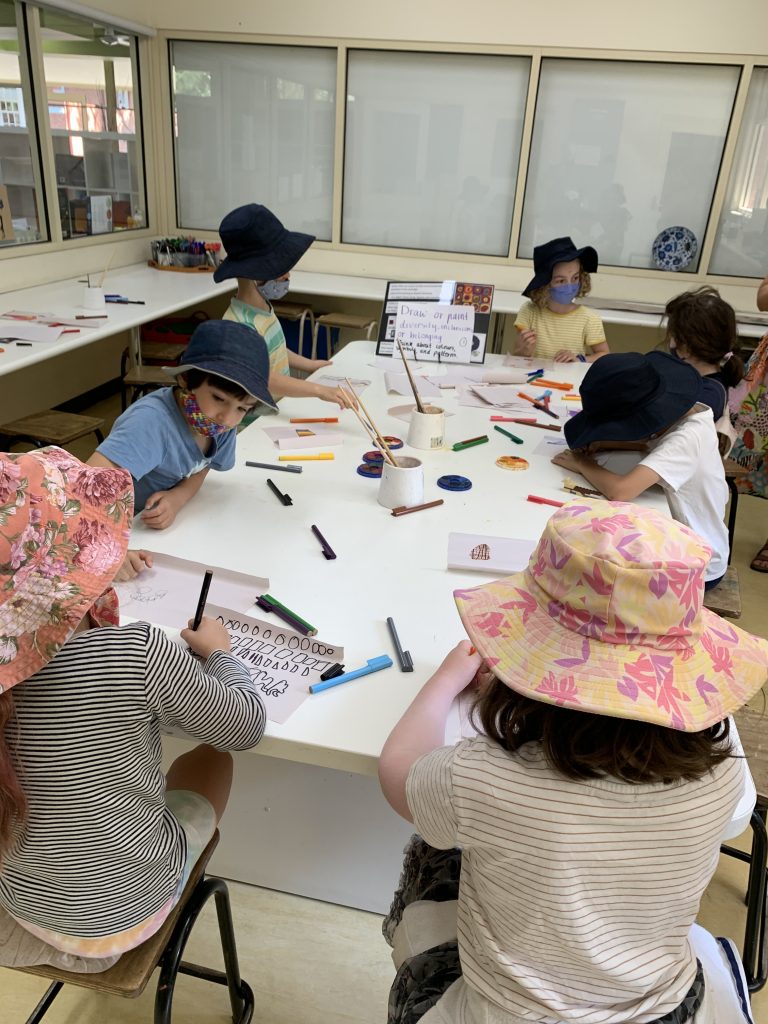
Children were, almost instinctively, inspired to create Harmony Day flags that represent diversity, inclusion and belonging, identifying that flags combine cultural representation, symbolism and colour. After the inspiration on Monday, the design of Harmony Day flags has been offered as a provocation.
“Flags relate to where different people come from. We should respect each other’s flags.” (Eddie)
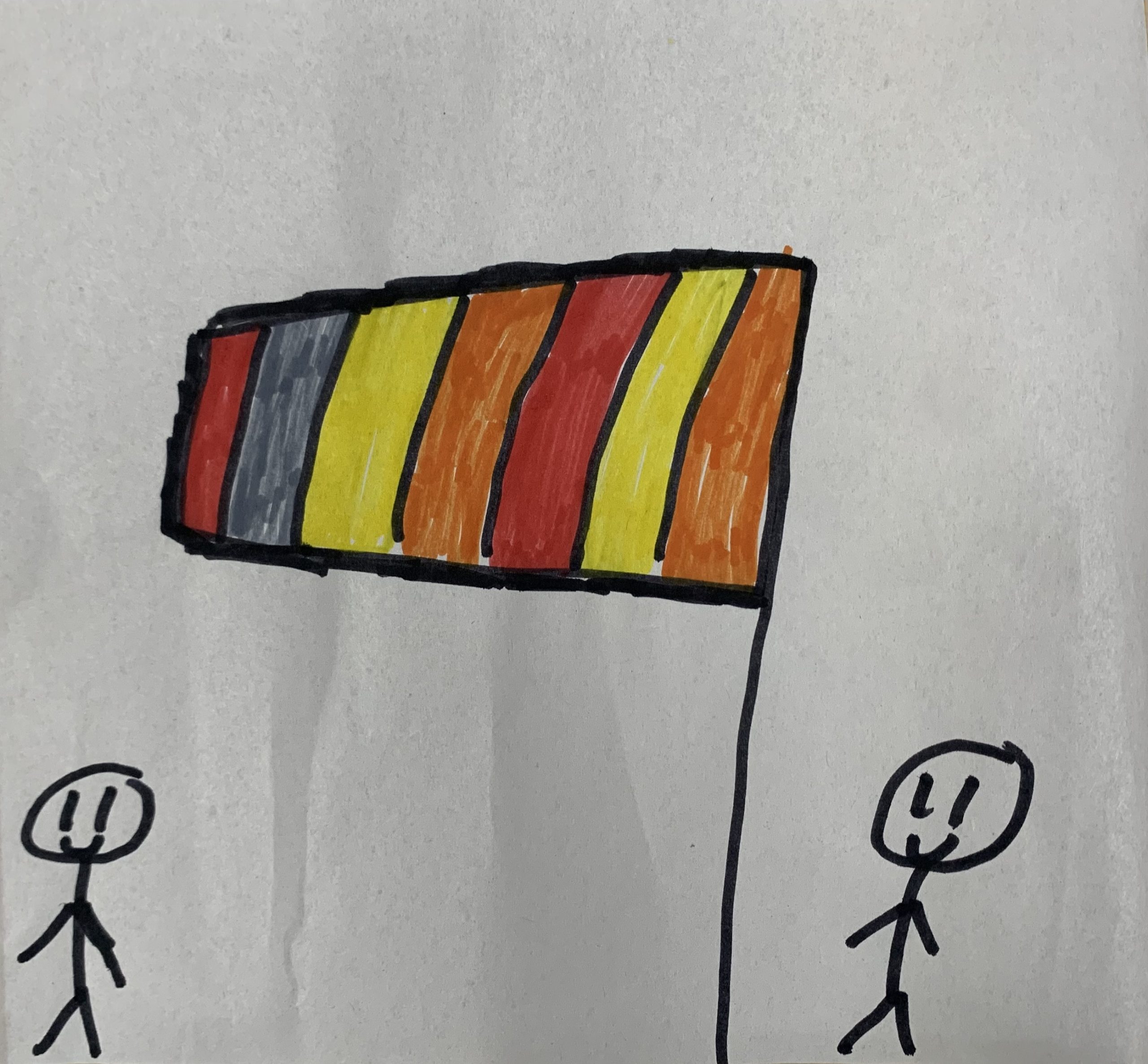


Isla- “I have decided to make a Harmony Day flag from the Aboriginal Flag because the Aboriginal people were the first on this land and are very important. I chose sunset colours because it’s pretty and calming. Also, everyone experiences the sunset so it represents togetherness.”
Billie- “On my flag, the orange represents Harmony, the green represents nature and the blue the ocean. Nature and ocean are part of the land.”
Isla- “The land brings us together.”
Billie- “Aboriginal people are really special and clever. That’s why I used their flag as the base.”


We, as educators, believe that Harmony Day provided the Year 2 children with a context to articulate, express and combine the thinking they generated while inquiring into ‘Our World’. While connecting Harmony Week’s message to people and relationships, the children began to show an understanding of their role in enacting values and the effect this can have on others. We look forward excitedly to new possibilities that combine this understanding with the children’s developing position as ‘Experts of Change’.
